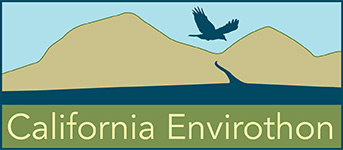Wildlife Resources for 2021/2018
STUDY MATERIALS – WILDLIFE:
Recommended California Ecosystems & Wildlife Videos
- Ecosystems of California YouTube Video from Prof. Erika Zavaleta – Recommended Segments:
- Biodiversity (16:17): https://youtu.be/-Jq9945N7lY
- Rivers (11:02): https://youtu.be/LWOPUTBJKnc
- Estuaries (12:12): https://youtu.be/i5qhlXvmbWE
- Why the US Erased its 9th Largest Lake… (8:10): Why the US Erased its 9th Largest Lake… – YouTube
- Tales of the San Joaquin: A River Restored (22:06): https://youtu.be/TUDH2kuNmww
- The New Way Forward: Wetlands (8:44): https://www.youtube.com/watch?v=PDvk8fSAdh4&t=101s
- NRCS – Waterbird Habitat Enhancement Program in California’s Sacramento Valley (7:45): https://www.youtube.com/watch?v=kn_q2dO3eCU
- Hidden in Plain View: Wildlife of the San Joaquin Valley of California (26:30): Hidden In Plain View – YouTube
- DamNation – The Problem with Hydropower (full-length documentary film): https://youtu.be/laTIbNVDQN8 (recommended additional resources for students interested in riparian restoration, but not required viewing for the webinar or test)
General Wetland & Riparian Concepts
- Ecology of Wetland Ecosystems: Water, Substrate, and Life: https://www.nature.com/scitable/knowledge/library/ecology-of-wetland-ecosystems-water-substrate-and-17059765/
- An Introduction to Riparian Areas: https://www.conservation.ca.gov/dlrp/watershedportal/Documents/RCD%20Riparian%20Intro%20Fact%20Sheet%20(napa%20rcd).pdf
- Vernal Pools (EPA summary): Vernal Pools | Wetlands Protection and Restoration | US EPA
- International Crane Foundation “Wetland Wonders” food web activity: https://www.savingcranes.org/wp-content/uploads/2018/06/Activity-2-Wetland-Wonders.pdf
Bird References
- All About Birds – Bird Guide: https://www.allaboutbirds.org/guide/
- Overview of bird types: https://www.tmparksfoundation.org/birds
- Kern National Wildlife Refuge Complex bird species list: https://www.fws.gov/uploadedFiles/Kern%20Complex%20Birdlist-b.pdf
- Pacific Flyway Overview: https://www.watereducation.org/aquapedia/pacific-flyway
Upland Wildlife References
- Central California Valley grassland: https://www.worldwildlife.org/ecoregions/na0801
- Wildlife of the Tulare Basin: http://www.tularebasinwildlifepartners.org/wildlife.html
- California Herps – A Guide to the Amphibians and Reptiles of California: http://www.californiaherps.com/
- iNaturalist – Central Valley (California) Check List: https://www.inaturalist.org/check_lists/139629-Central-Valley–California–Check-List (look at native species in particular – https://www.inaturalist.org/check_lists/139629-Central-Valley–California–Check-List?commit=Filter&establishment_means=native&observed=any&occurrence_status=not_absent&page=1&q=&rank=species&taxon=&taxonomic_status=active&threatened=any&view=photo)
Fish References:
- Native fish species accounts: https://caltrout.org/sos/native-species
- News Article – “California’s Chinook salmon are in danger. Rice fields just might be their salvation” : https://thecounter.org/california-chinook-salmon-rice-fields-biographic/
Water Management in the California
- Wetlands of the California Central Valley: Status and Trends – 1939 to mid-1980s: Wetlands of the California Central Valley: Status and Trends 1939 to mid 1980’s (fws.gov)
- Guide to Wetland Habitat Management in the Central Valley: https://nctc.fws.gov/courses/csp/csp3106/resources/Management/Guide-to-Wetland-Habitat-Management-in-the-Central-Valley.pdf
- News Article – “The disappearing wetlands in California’s Central Valley”: https://www.hcn.org/articles/the-disappearing-wetlands-in-californias-central-valley
- “The Central Valley Historic Mapping Project” report on wetland loss in California: https://www.waterboards.ca.gov/waterrights/water_issues/programs/bay_delta/docs/cmnt081712/sldmwa/csuchicodptofgeographyandplanningcentralvalley.pdf
- Conceptual aerial image of California before European colonization: https://bigthink.com/strange-maps/557-the-first-satellite-map-of-california-1851
- NPR Report – “Drilling Deeper Wells Contributes to California’s Subsidence Problem: https://www.npr.org/2015/08/20/432978459/drilling-deeper-water-wells-contributes-to-california-s-subsidence-problem
- The Bufferlands – wetland restoration using recycled wastewater: https://www.regionalsan.com/bufferlands
Invasive Species of the Central Valley References
- Managing a Non-Native Delta Ecosystem: https://www.ppic.org/blog/managing-a-non-native-delta-ecosystem/
- “Managing Non-native Species in California: The Red Fox” report by CA Department of Fish and Game: https://nrm.dfg.ca.gov/FileHandler.ashx?DocumentID=22712
- Species Profile – Yellow Star Thistle: https://www.invasivespeciesinfo.gov/terrestrial/plants/yellow-star-thistle
- California’s Invaders: Brown-Headed Cowbird: https://wildlife.ca.gov/Conservation/Invasives/Species/Cowbird
- California’s Invaders: American Bullfrog: https://wildlife.ca.gov/Conservation/Invasives/Species/Bullfrog
- Species Profile – Arundo donax: https://www.cal-ipc.org/plants/profile/arundo-donax-profile/
- European Starling: https://www.fs.fed.us/research/invasive-species/terrestrial-animals/european-starling.php
–
Katibah 1984 Brief history of riparian forests in the Central Valley of California – PDF
Greco 2013 Cuckoo habitat Sacramento River – PDF
Gaines and Laymon_1984_Decline status and preservation of the YBCU in CA Gaines Laymon – PDF
Dybala et al 2017 Population and habitat objectives for avian conservation in Central Valley – PDF
Updated Wildlife Resources for 2018
https://calscape.org/
Flora of Wind Wolves Preserve:
https://www.inaturalist.org/guides/2497
https://www.insectidentification.org/insects-by-state.asp?thisState=California
https://bugguide.net/node/view/15740
http://www.whatbird.com/birdexpert/StateColorSize/2/275/birdexpert.aspx
https://www.allaboutbirds.org/guide/search/
http://www.naturetracking.com/
http://www.bear-tracker.com/guide.html
http://octrackers.com/
https://www.khanacademy.org/science/biology/ecology
https://www.nature.com/scitable/knowledge/ecology-102
https://scienceaid.net/Category:Ecology
https://www.nationalgeographic.org/encyclopedia/biodiversity/
http://extension.oregonstate.edu/4hwildlifestewards/School%20Garden%20Resources/Wildlife%20in%20Your%20School%20Habitat/management.htm
https://www.nature.com/scitable/knowledge/library/ethics-of-wildlife-management-and-conservation-what-80060473
http://www.mascd.net/envirothon/wildlife/Wildlife/Wildlife%20Management%20Concepts.pdf
http://fwp.mt.gov/fishAndWildlife/management/managementPrinciples.html
http://www.dfg.ca.gov/wildlife/nongame/t_e_spp/
https://www.fws.gov/endangered/
http://www.natureserve.org/
http://wildlife.org/resolving-human-wildlife-conflicts/
Identifying and Preserving Wildlife Tracks
http://www.42explore.com/animaltracks.htm (1W)
Canada wildlife identification and habitat
http://www.hww.ca/ (1W, 7W, 8W)
Winter animal adaptations Michigan State University Extension
https://www.canr.msu.edu/news/animal_adaptations_for_winter (3W)
Animal Adaptations, Boreal Forest Network Canada
Wildlife Populations University of Minnesota
(4W, 5W, 6W, 8W, 9W, 10W, 11W)
Predator/Prey Relationships “Eyes of Yellowstone” Yellowstone Park Foundation Sponsored by Canon®
http://www.ypf.org/partnerships/corporate.asp (4W)
Create a Food Chain Canada Wildlife Act
http://www.vtaide.com/png/foodchains.htm (5W)
Carrying Capacity National Wildlife Federation
Carrying Capacity World Builders
http://curriculum.calstatela.edu/courses/builders/lessons/less/biomes/carryingcap.html (9W)
Invasive Species USDA
http://www.invasivespecies.gov / (11W)
Invasive Species US Fish and Wildlife (11W)
http://contaminants.fws.gov/Issues/InvasiveSpecies.cfm (12W)
Wildlife Extended Studies
Students should create a display outlining conservation oriented land use planning to preserve bird habitat.
- Cornell Lab of Ornithology All About Birds
http://www.birds.cornell.edu/programs/AllAboutBirds/ (1W, 2W, 3W, 6W, 7W, 8W, 10W)
Students should review wildlife habitat areas of the California Central Valley. Students should describe the following: wildlife populations, land descriptions, human destruction to the habitat, and solutions to the problem. (2W, 5W, 6W, 7W, 8W, 11W, 12W)
Students should examine the impact of the feral pig, an introduced animal, on the native Hawaiian plant and animal species. Research should be used from the following viewpoints: Conservation Environmentalist, Native Hawaiian Hunter, and Animal Rights Activist. Students should create a power point presentation detailing measures which should be taken so all sides are represented.
